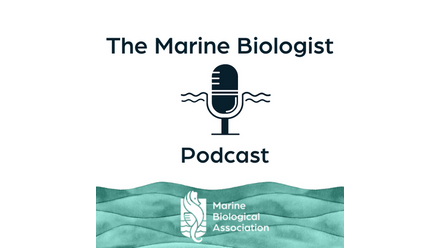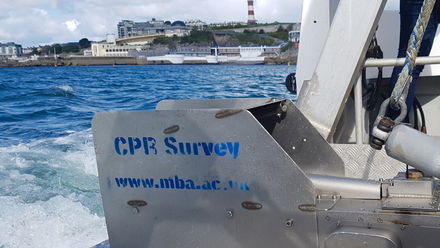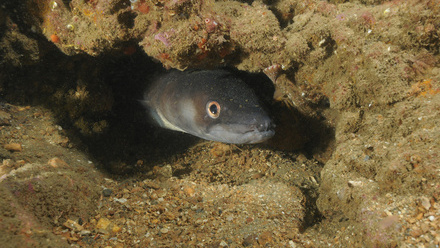Emerging applications of Artificial Intelligence (AI) are becoming increasingly common across research disciplines, from the automated detection of malignancies in medical images to optimizing the efficiency of food supply chains. Marine biological research is also increasingly utilizing AI with potential benefits for how we understand and protect marine life.
My research focuses on the relationship between marine biodiversity—patterns and changes in the types of marine life we find across space and time—and people. Marine biodiversity is highly impacted by both climate change and human activities including overfishing, pollution from sewage and agricultural run-off, and noise disturbance from industrial activities, all of which put at risk the benefits provided by the ocean. Ocean benefits such as fisheries and the offsetting of carbon emissions are closely connected to economies and livelihoods, meaning that changes in marine biodiversity can result in (sometimes serious) consequences for society. Understanding biodiversity baselines and changes are therefore vital to recognizing where we need to regulate human activities to effectively conserve marine life.
Seventy per cent of the Earth’s surface is ocean, much of which is unstudied. However, in areas which have been routinely studied, decades of marine biological sampling efforts have generated hundreds of millions of biodiversity records. These records originate from a range of sources, including citizen science programmes, research expeditions, and long-term monitoring surveys, such as the Marine Biological Association’s Continuous Plankton Recorder (CPR) Survey. Marine biodiversity records are collated in databases such as the Ocean Biodiversity Information System (OBIS) and provide invaluable evidence to policymakers. Recent developments in AI are advancing our understanding of marine biodiversity even further. Here are a few developments which I am particularly excited about:
Monitoring
Computer vision is a branch of AI that is concerned with extracting information from visual data. These models are being increasingly applied in marine biodiversity monitoring to automatically detect and quantify occurrences of marine life from videos and images. There are a wide range of computer vision applications emerging, from classifying specimens of microscopic plankton in water samples to detecting beached whales from satellite imagery in remote or inaccessible locations. Similarly, acoustic recordings of the ocean can be fed into AI models which are able to classify the presence of marine life from the sounds they produce—this is particularly valuable for detecting the vocalizations of whales and dolphins. These AI biodiversity monitoring technologies can then be integrated into devices which are left at sea or deployed on automated underwater vehicles to collect data. Further work is required to ensure these methods are sufficiently accurate to inform policy, but they hold great potential to improve the availability of biodiversity data for inaccessible or remote areas such as the deep sea, and for marine life which would otherwise remain unseen.
Spatial modelling
In addition to generating biodiversity records, AI is being increasingly used to analyse existing historical records. Part of my research has been exploring how neural networks (a type of AI model) can be used to generate species distribution maps from large biodiversity databases such as OBIS. Certain species and locations are often under-represented in historical biodiversity databases: for historical marine biodiversity records, we see a particular under-representation of the deep sea and Areas Beyond National Jurisdiction (the high seas). Neural networks can detect intricate patterns from large datasets which would otherwise go unnoticed by people, allowing us to use a limited number of historical observations for a particular species to model where it is likely to be found. The model may learn pattens such as the environmental preferences of a species or which species often coexist together, increasing the accuracy of what can be modelled from limited data.
Forecasting
Forecasting changes in biodiversity is a highly complex task. Changes in marine biodiversity are driven by multiple factors, from temperature and salinity to the amount of different trace metals dissolved in the water. However, this kind of task is not unique to marine biology. Extensive efforts to develop time series models, particularly for economic projections, have yielded highly effective AI approaches to forecasting. I recently contributed to work led by Dr Matthew Holland at the University of Plymouth where we used a machine learning model to predict how plankton communities change with environmental conditions. The model was impressively accurate at predicting changes to plankton communities and highlighted previously unseen patterns of how specific pressures from human activities, such as nutrient pollution, are linked to changes in plankton biodiversity.

Matthew Faith at the Alan Turing Institute.
© Matthew Faith.
Issues with AI
Despite these advances, there are many issues with AI which are widely debated, from the reliability of AI outputs to the environmental footprint of training models. During my PhD, two issues have particularly caught my attention. First, the research fields of AI and biodiversity are highly specialist and do not always collaborate; building collaborations between the AI and marine biodiversity research communities must be prioritized. I am therefore very grateful for my time at the Alan Turing Institute, which has facilitated my collaboration with AI-biodiversity experts such as Dr Oisin Mac Aodha and provided practical support for me to integrate AI into my research. Secondly, the computing resources required to train AI models are expensive, not accessible to many researchers, and sometimes leave an environmental footprint. We therefore have a responsibility to ensure that developments in AI for biodiversity research are made open-source where feasible, to avoid duplicated efforts and to maximize benefit sharing with the wider scientific community.
• Matthew Faith (matthew.faith@plymouth.ac.uk), PhD student at the University of Plymouth and an Enrichment Student at The Alan Turing Institute–the UK’s national institute for artificial intelligence and data science.
@matthewfaith.bsky.social; @mattpfaith (Instagram)
Matt is funded by the University of Plymouth, the UK Department for Environment Food and Rural Affairs (DEFRA), and The Alan Turing Institute. His supervisors are Professor Abigail McQuatters-Gollop (University of Plymouth), Professor Angus Atkinson (Plymouth Marine Laboratory), Dr Clare Ostle (the Marine Biological Association), Professor Sian Rees (University of Plymouth), and Dr Oisin Mac Aodha (University of Edinburgh and Fellow of The Alan Turing Institute).




